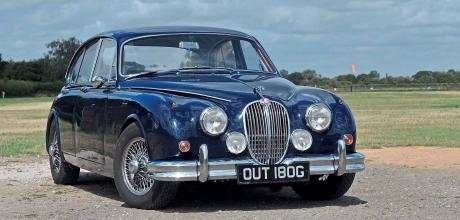Modern six-speed automatic gearbox transforms the Jaguar Mk2’s performance and refinement
We sample a Mk2 with a dramatic shift in personality thanks to a modern gearbox transplant.
Gearing up
MODERNISED MK2
Dropping in a modern six-speed automatic gearbox transforms the Mk2’s performance and refinement.
Something which won’t come as a great surprise to anyone immersed in the classic car world is just how great a gap there is between those classics from the ’60s which feel hopelessly out of their depth on modern roads and those which can still serve as everyday transport.
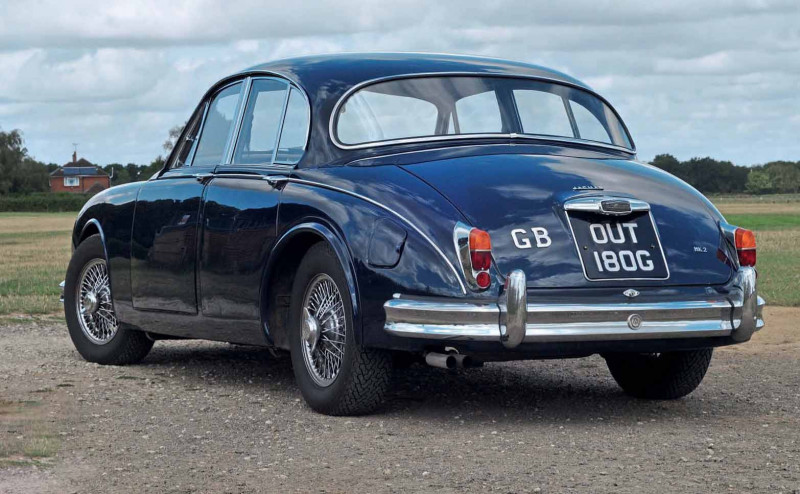
The Mk2 is a case in point, especially in its bigger-engined forms, since despite having its roots in the ’50s it still has the pace to hold its own in modern traffic and for the committed owner there’s no reason not to use one as a daily driver – at least in the summer months.
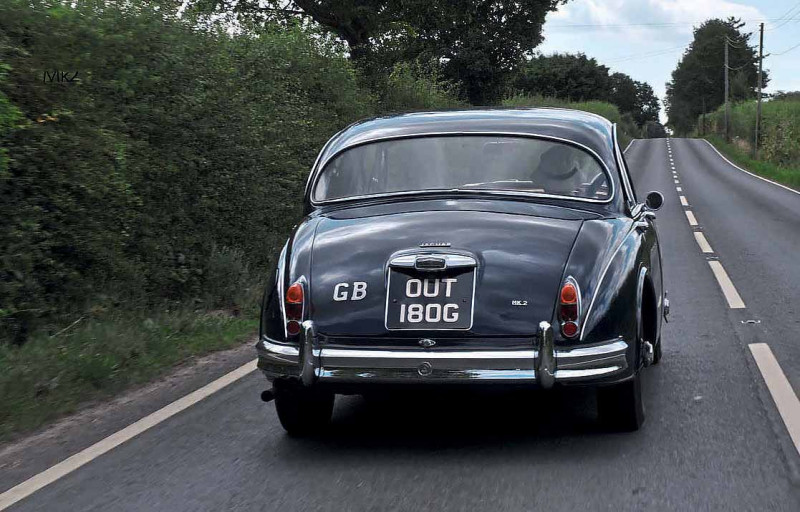
The example you see here illustrates that perfectly, since owner Michael happily admits to using the car as daily transport over the 10 years for which he has owned it – although the purists out there will be gratified to hear that he purloins the wife’s car when required to save the Jaguar from the extremes of winter roads.
Having run Mk2s out in Malaysia during the ’60s, Michael bought this particular car “to close the circle,” as he puts it but despite having been fitted with the larger 4.2-litre XK engine, it also came with the BorgWarner three-speed automatic.
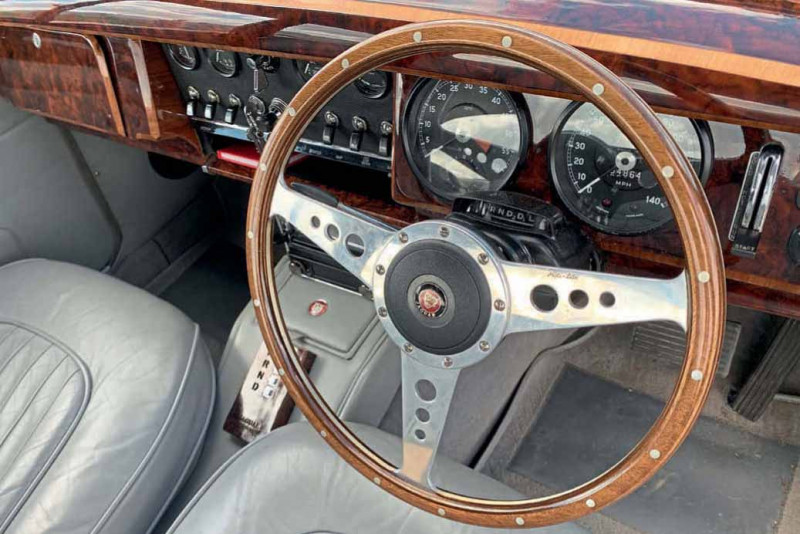
As anyone who has driven pretty much any Jaguar prior to the XJ40 will know, the three-speed box does nothing for the driving experience and in many ways, it’s more noticeable with the XK six-cylinder than with the torquey V12. Yes, an automatic Mk2 can be made to pick up its heels if constantly stabbed into kickdown but it’s a jerky way to access the performance and not the kindest way to treat a 60-year old machine. The lack of a fourth or fifth ratio can also make it hard work to achieve a brisk but gentle crosscountry cruise, needing concentration to work the throttle pedal precisely enough without either shedding toomuch speed on the uphills or disturbing passengers with a jolting downshift. Such things are of course all part and parcel of driving a genuinely old car and few people would describe the Moss manual box in these cars as either refined or relaxing. That doesn’t however stop you from wondering what the self-shifting Mk2 would be like with just one extra ratio, or maybe even two.
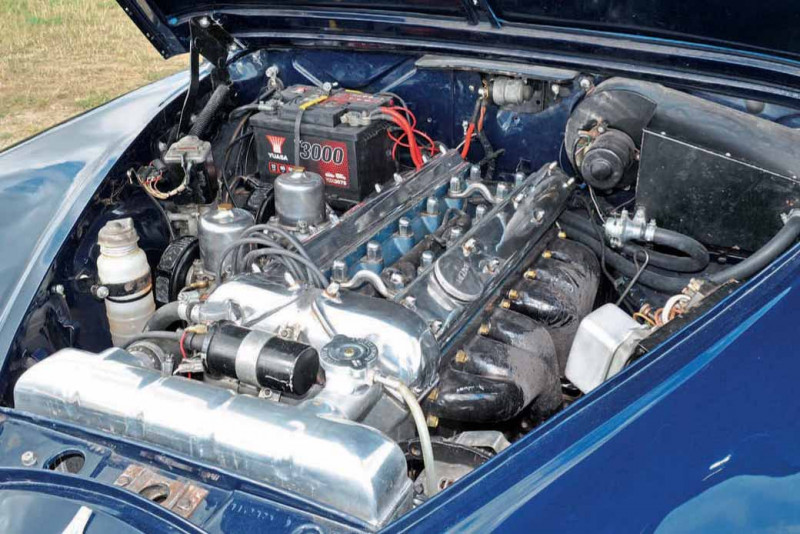
Or, indeed, how about an extra three gears? For that’s what we have here, courtesy of Motor Legends which regular readers might remember from our October 2022 issue when we sampled a pair of E-Types upgraded by the firm to use modern six-speed automatic gearboxes. The conversion was born from founder Keith Perkins’ frustration with the three-speed box in his V12 E-Type and after much research it was discovered that the ZF 6HP – now made by Ford under the name 6R80 and used in the Mustang among others – could be used with a standalone controller.

Such is the march of progress in the transmission world that a six-speed unit is relatively commonplace in a world where Mercedes for example is routinely offering nine-speeders, but one major limiting factor is that the control electronics in the majority of modern boxes are designed to interface with the rest of the systems in the car for which they were originally designed. The Ford/ZF unit however uses an external control unit and with a little help from the aftermarket, Motor Legends was able to develop a package which allows the unit to be operated independently. Crucially, the controller can also be programmed or ‘mapped’ with a laptop to provide shift behaviour tailored to the owner’s preference. As we discovered with the E-Types last year, the modern box absolutely transforms the car and the transformation was even more noticeable in an XJ-S which frankly felt as if it gained around 100bhp as the V12’s power was liberated.
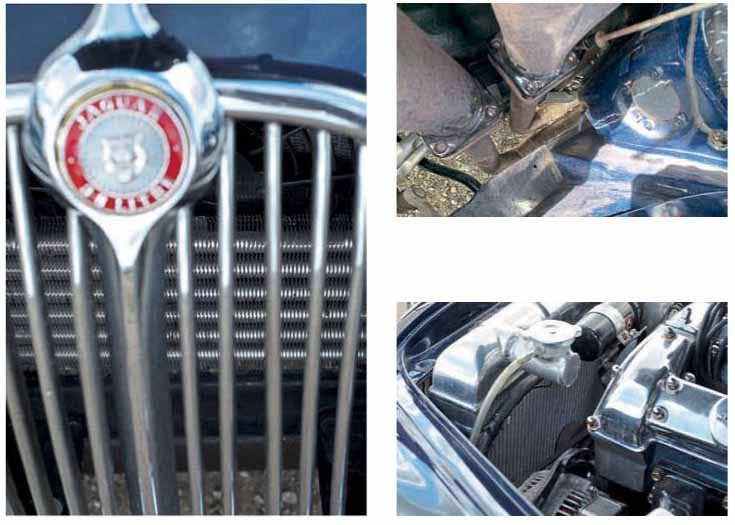
All of which explains why when Motor Legends’ Andrew Parkinson told us that the firm had installed the six-speed into a Mk2, we were intrigued. The more so when he explained that the goal with this conversion was refinement rather than outright performance. Like so many owners, Michal had become increasingly frustrated with the car’s original three-speed box and was inspired by our coverage of the E-Type conversions.
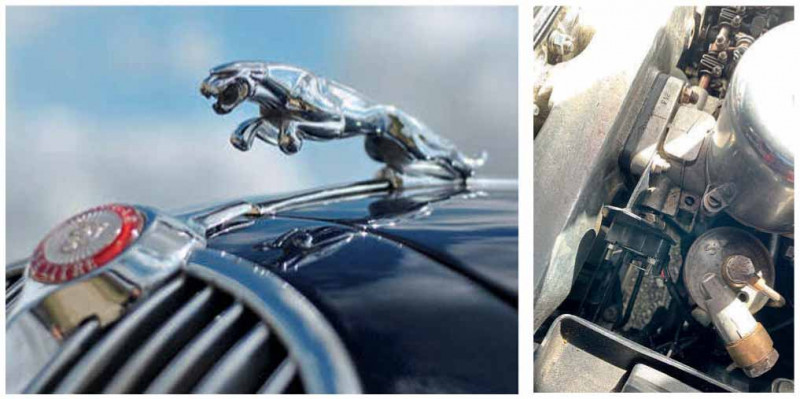
Starting with the basics, the first task was to physically accommodate the modern box, which is where the bulk of the labour in the conversion lies. Whereas the V12 E-Type required relatively little modification to the tunnel to accommodate the modern box, the six-cylinder cars – both E-Type and Mk2 – use a narrower tunnel. The solution for the Mk2 follows that used for the conversion in the six-cylinder E-Type and essentially involves fitting the transmission tunnel from the V12 E-Type which offers some 20mm more room on each side. It may not sound like much, but it’s enough to squeeze the six-speed into place and once trimmed and carpeted it’s barely noticeable inside.
Mating the engine and gearbox is achieved by a precision machined adapter plate, with the electronic controller mounted inside the car out of harm’s way. The controller also requires a means of sensing the throttle position, which is achieved by adding a sensor to the throttle spindle shaft behind the rearmost carburettor. Unsurprisingly, the Ford box requires proper cooling, unlike the BorgWarner unit which relied on the simplest of air-cooling via fan blades incorporated into the torque converter and to this end an external oil cooler is mounted in front of the water radiator. This itself is a replacement aluminium unit and runs with an electric fan mounted in front of the radiator after it was discovered that the original belt-driven fan had been touching the fins – a common issue with the Mk2.
One area where the Mk2 differs from the E-Type and XJ-S installations is that Jaguar’s automatic saloon cars of this era used a column shifter rather than the tunnel-mounted lever of the sports cars and initially this was used to operate the six-speed box. As Andrew explains though, they were never entirely satisfied with the installation, possibly as a result of the convoluted cable run which makes it tricky to achieve the precise movement required.
Fortunately, an alternative and very elegant solution presented itself in the shape of a solenoid system operated by a remotely mounted electronic shifter. With the solenoid mounted to the side of the gearbox, the controller can be mounted pretty much anywhere convenient, with Andrew reporting that adjustment and set-up of the unit were straightforward. As installed in Michael’s car, it sits neatly on the centre tunnel and the ‘P-RN- D’ buttons light up when selected.
Naturally there’s a safety interlock which requires the brake pedal to be pressed before a drive gear can be selected. As a precaution, a heat shield was fabricated for the gearbox solenoid, while the exhaust pipework was wrapped in heatproof insulation for good measure and so far it’s been faultlessly reliable. One area where the Mk2 installation proved easier than the E-Type was in the handbrake mechanism, which on the Mk2 uses an outboard lever by the sill, rather than the tunnel-mounted shifter. As we’ve mentioned, the controller can be accessed via a laptop to create a preferred ‘map’ for shift behaviour and it’s here that the Mk2 differs on the road from the previous conversions. Michael’s goal was to improve the cruising ability of the car rather than its straight-line pace and as a result it’s a less aggressive map. On the road it works really very well, too. It’s always daunting taking the driver’s seat with the car’s owner sitting next to you, but on this occasion Michael was happy to be chauffeured in the back seat, curious to find out what his revitalised Mk2 was like for passengers. One of the stiffest tests of any car is generally how easy it is to drive slowly and leaving the potholed gravel parking area of the airfield we’d used for our photos, the first impression was that the modern gearbox makes the car easy to drive at a walking pace crawl. Certainly in stop-start traffic the progressive pick-up from a standstill makes the Mk2 less tiring than the sometimes abrupt three-speeder.
As speed builds, the cruising nature of the mapping makes itself felt by the unobtrusiveness of the shifts, the car easing up through the box so gently that at one point I’d lost track of which gear it had reached. Turning on to a busy A-road reveals perhaps the major benefit of the modern gearbox in that the car can hold a steady speed without the engine revs fluctuating wildly and a generally more relaxed demeanour is the result. The Ford box naturally offers a lock-up clutch which is programmed to engage in fourth, fifth and sixth gears and translates to a significant increase in real-world economy.
This car retains the standard 3.54:1 differential, which drivers of Mk2s will know translates to a noisy motorway experience, but with the Ford box the car shows just under 2000rpm at 60mph, making for much more serene progress. Despite tailoring the set-up towards refinement rather than speed, the performance benefits of the six-speeder are still there for the taking – it’s just that the driver needs to be more deliberate to access them. In the spirit of experimentation (and mindful of the car’s owner in the back seat), I gave the throttle a decisive prod and discovered that the combination of six-speed automatic, Mk2 and 4.2-litre XK powerplant is a really very agreeable one, which can show a clean pair of heels to many modern cars. Ironically the combination of classic Jaguar and modern Ford componentry reflects the American company’s ownership of Jaguar which in so many ways was a high point of its history, but it also illustrates how the purists can sometimes be missing a trick. To put it bluntly, a Mk2 with this conversion is always going to see far more use in the real world than a car in factory trim and in the world of old cars, enjoying them is what it’s all about.
Find Motor Legends at motorlegends.co.uk or on 01622 673404
Electronic pushbutton shift can be mounted anywhere convenient
New gearboxhas dropped engine speeds considerably: at 60mph, it’s turning at just under 2000rpm
Uprated brakes complete the modern driving experience
Transmission oil cooler is neatly mounted in front of the main radiator
ABOVE: Exhaust is heat wrapped to protect the shift solenoid.
BELOW: Original belt driven fan was found to have been scraping the radiator fins and has nowbeen replaced by an electric unit in front of the radiator.
Throttle position sensor is mounted behind rearmost carburettor


